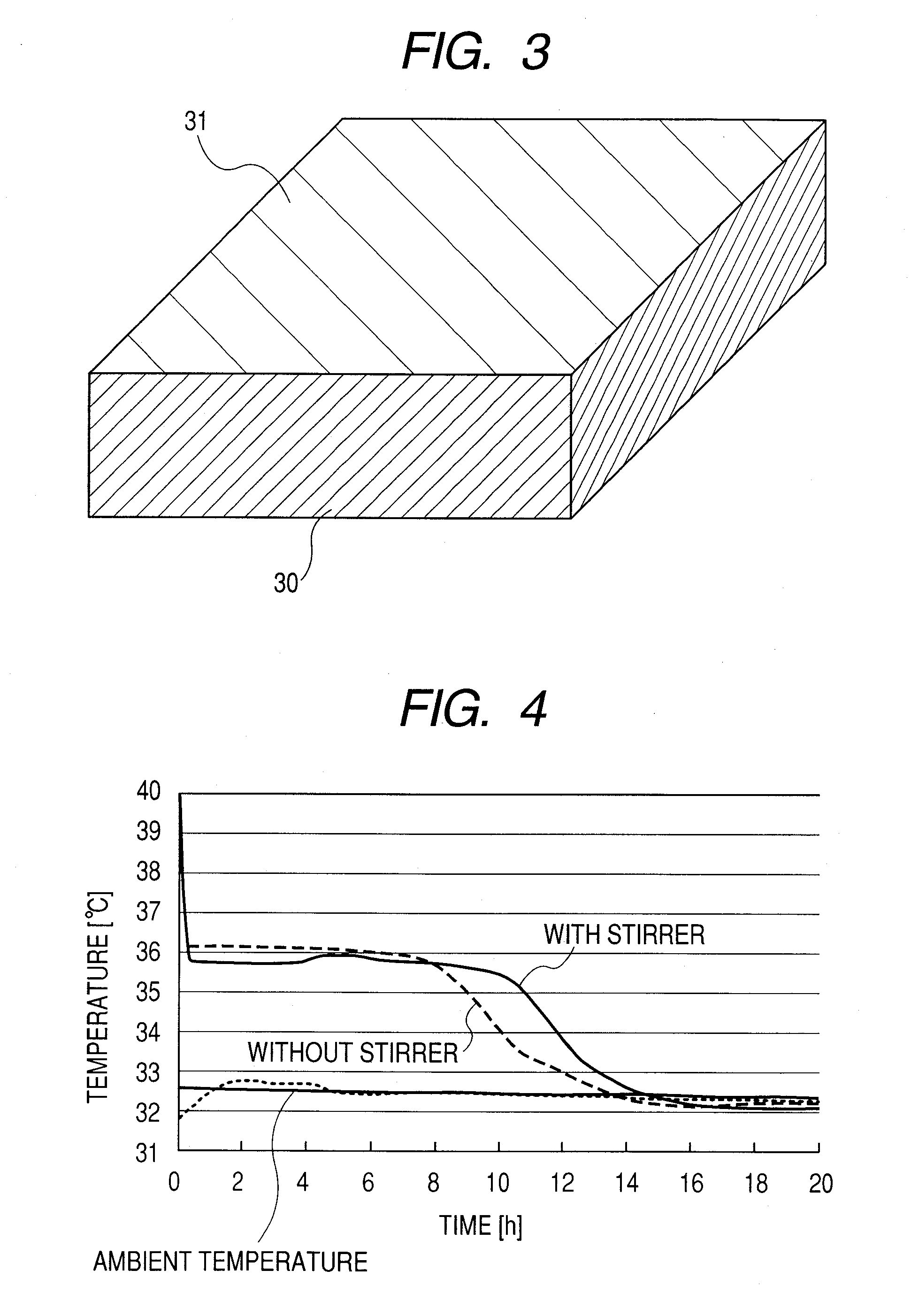Temperature regulating member
a technology of temperature regulation and member, which is applied in the direction of air heaters, indirect heat exchangers, light and heating apparatus, etc., can solve the problems of increased cost, increased labor, and difficulty in implementing temperature adjustment, so as to achieve greater ease of control, reduce labor intensity, and reduce labor intensity
- Summary
- Abstract
- Description
- Claims
- Application Information
AI Technical Summary
Benefits of technology
Problems solved by technology
Method used
Image
Examples
Embodiment Construction
[0020]Embodiments of the invention will be described hereinafter with reference to the accompanying drawings. FIG. 1 is a perspective view showing an embodiment of a temperature regulating member according to the invention, comprising a heat-accumulating material, a stirrer disposed within the heat-accumulating material, and a vessel containing the heat-accumulating material, and the stirrer. FIG. 2 is a perspective view of another embodiment of a temperature regulating member according to the invention, comprising a heat-accumulating material, plural (3 pieces in this embodiment) stirrers disposed within the heat-accumulating material, and a vessel containing the heat-accumulating material, and the stirrers. FIG. 3 is a perspective view of still another embodiment of a temperature regulating member according to the invention, wherein parts of a vessel containing a heat-accumulating material, in contact with a culture vessel containing cells, are formed of a thermally conductive mem...
PUM
 Login to View More
Login to View More Abstract
Description
Claims
Application Information
 Login to View More
Login to View More - R&D
- Intellectual Property
- Life Sciences
- Materials
- Tech Scout
- Unparalleled Data Quality
- Higher Quality Content
- 60% Fewer Hallucinations
Browse by: Latest US Patents, China's latest patents, Technical Efficacy Thesaurus, Application Domain, Technology Topic, Popular Technical Reports.
© 2025 PatSnap. All rights reserved.Legal|Privacy policy|Modern Slavery Act Transparency Statement|Sitemap|About US| Contact US: help@patsnap.com



